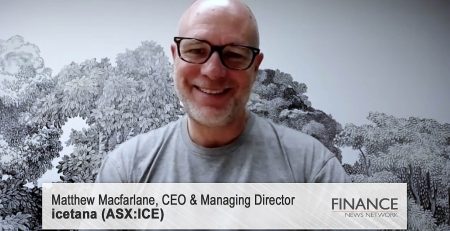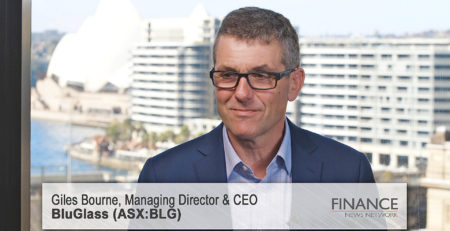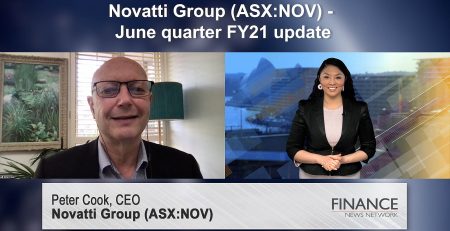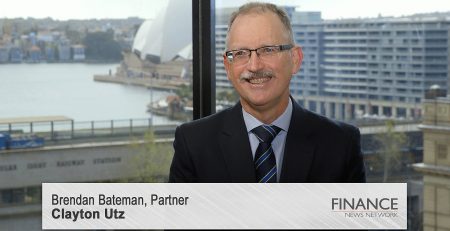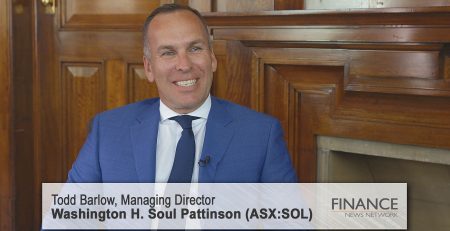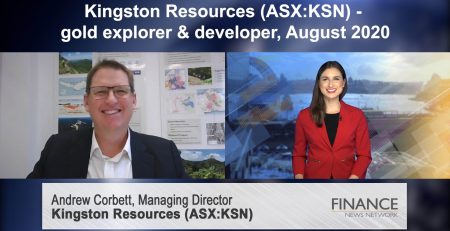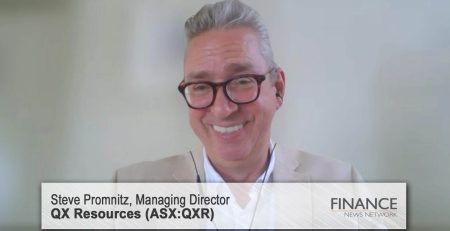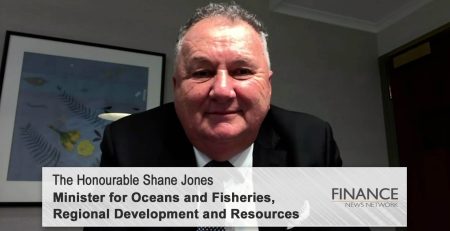Market update with Shaw and Partners, March 2024
Shaw and Partners Chief Investment Office Martin Crabb discusses the leading indicators for equity markets, financial conditions and central banks.
Manny Anton: Okay. Let's get started. First up, we have a keynote speaker from Shaw and Partners to give us an updated market outlook presentation. Presenting from Shaw and Partners today will be Chief Investment Officer Martin Crabb. Martin, welcome back to the Hidden Gems Webinar series. Please take it away.
Martin Crabb: Thanks, Manny, and welcome everyone to today's session. Shaw and Partners is proudly associated with the Finance News Network and ShareCafe for a number of years, so I do enjoy coming on here and having a chat about markets. And I've got the unenviable task of having to try and work out the world and make sense of it in the next eight or so minutes. So, let me start with a framework that we typically use to determine whether we're in a growth market or a defensive market, and they're growth financial conditions and central bank positioning.
So, if we look at growth first, looking at leading indicators. So, whether it's the OECD composite leading indicator or the Conference Board leading indicator out of America, they're all saying the same thing, which is that global economies are slowing at a slowing pace. So, we've seen the ratcheting up of interest rates around the world. Consumers have adjusted to that. Inventory cycles have been normalised post the COVID disruption, and we're getting back to normal where we're living with higher rates and the economy's stopped slowing down. In fact, in some economies, we're starting to see early signs of acceleration. So, if you look at things like China, for example, that economy's been expanding for most of last year. The US economy is starting to show signs of life as well.
So, it's not like growth is picking up, it's just slowing down at a slower rate, and we're interested in the rate of change of the leading indicators, not the level. So, we are encouraged by that. So that's, I suppose, one tick or one green light.
The second factor we spend a lot of time thinking about is financial conditions. So, these are the lubricants of the global economy, if you like, credit and the availability of equity capital. And we've seen, again, a significant tightening of that all the way through 2022. 20 23, we saw a relaxation. So, from… Credit spreads for high-yield bonds were over 6 per cent above US treasuries, that's now down to 3 per cent. So, that's been a substantial loosening in credit spreads.
Even things like fixed rate mortgages in Australia just kept going up and up and up, and the spreads on those kept going up and up and up. Banks are becoming a bit more comfortable that we're not going to have a hard landing, that employment's going to stay high and that interest rates aren't going to move significantly from where they are, so banks are lending again. So, that's a very good news story.
We haven't quite seen the equity capital markets open up. But that's probably the next step in the process is that, as investors become more confident in the outlook and that rates aren't going up, we'll see a further relaxation of financial conditions. And, again, it's the rate of change that we're interested in there. So, another green light or another tick.
And the final piece of the puzzle, if you like, is central banks. So, the debate rages on about when central banks are going to cut and who's going to go first. There was some discussion this week that the Reserve Bank of New Zealand would hike rates, so we're still not even out of the hiking cycle yet. They didn't do that. So, there were some banks who thought the Reserve Bank of New Zealand would hike.
So, it's pretty clear to us and most other commentators that the central banks are done. They're not going to tighten rates any further because we're starting to see deflationary forces come through. We're starting to see inflation numbers stop going up. They're maybe not coming down as fast as we'd like, but they've stopped going up. So, it means that monetary policy will go from restrictive back to neutral at some point. And, again, it's the rate of change of monetary policy that we're concerned about.
So, those three things are giving us three green traffic lights or three ticks and suggesting that it's a good time to start or to be fully invested.
So, the thing that's probably just giving us a little bit of caution is valuation. So, if we look at either relative or absolute levels of valuation, they remain elevated. So, if we've got US 10-year bonds at 4.5 per cent, the earnings yield on the market, which is one over the PE, it's the yield you'd get if you owned all the stocks and paid all the dividends, is around about 5 because the PE is about 20. So, the spread between the two, the earnings yield on equities and the yield on government bonds, is very narrow. And that typically suggests it's an overvalued market and that things need to cool down.
So, clearly, it's being driven by a very small number of stocks. The Magnificent Seven, everyone knows who they are. They make up 30 per cent of the S&P 500 and 20 per cent of all stocks in the world. So, you know, NVIDIA's market cap is greater than that of all the H shares, Chinese shares listed in Hong Kong, for example. So, the narrowness of the market has caused this valuation situation.
If we look broader than the Magnificent Seven and we look broader than the top, you know, four or five stocks in most markets, it paints a completely different picture. So, we have seen the market valuations look unattractive, but we really need to pick through that. And so, actually, if you take out the Mag Seven or the top four or five stocks in most markets, you can see quite a lot of valuation appeal. So, for example, the companies on today's call, not quite in the Magnificent Seven, maybe some time in the future, but their valuations will not have been shifted the way the Magnificent Seven because there's a lot of money chasing those seven businesses.
So, just sort of switching gears a bit to the reporting season. So, yesterday was technically the last day of reporting season in Australia. So, June balance companies came out with their first half results, and generally speaking, it was good. I suppose it was good from afar but far from good, if I can phrase it that way in that two companies beat estimates versus one company missing. So, that two to one beat ratio is quite good.
The flip side to that is that most people downgraded earnings outlook. So companies said, "Look, we've managed costs really well. Our margins have been managed well. In fact, we've grown margins despite the fact that revenue is slowing, but the outlook is not good." So, 60 per cent of companies that reported that talked about the forward indicators said that their revenue was slowing. Only 20 per cent said it was growing.
So, even though things were better than expected in terms of the results themselves, the outlook for those businesses is deteriorating, which is in line with a softening economy. As I said, it's not collapsing, it's softening, and we're starting to see signs that things are starting to level out.
So, in terms of the picking through the reporting season, a lot of downgrades in materials. I think most analysts had a too-optimistic view on commodity prices, particularly in the battery raw materials space.
Now, these companies, if you add all the companies in the battery raw material space together, make up about 3 per cent of the market, so it's quite significant. And obviously, with the lithium hydroxide price doing what it's been doing, there's been a lot of downgrades. Most nickel operations in Australia are unprofitable. So, they've all been downgraded. And we haven't really seen iron ore and copper and gold do enough to offset that. So, we've seen a lot of downgrades in that material sector. It's a significant part of the Australian market. So that… I think we've seen a lot of downgrades in that area.
Where we've seen upgrades has actually been in retailing, surprisingly, because, you know, with all the interest rates we've had, you'd think consumers would slow down, but consumer spending's holding up well, particularly in those sectors that are exposed to an older demographic. Because obviously, people who have paid off their mortgage, they're enjoying these higher interest rates and these higher investment returns on their portfolios. And I think a record $150 billion in retirement payments were made last year, which is about 10 per cent of national income. So, some parts of the economy are continuing to do very well.
So, our outlook and how we, you know, invest and balance our portfolios, we are overweight equities. We think the worst is behind us in terms of the rate of change of economic growth and we think things improve going forward. And within the fixed income, we are still staying relatively short duration, which means that we've got a lot of floating rates securities because we think rates will probably stay high. So, we can get six and sevens on our fixed income, we can get, you know, reasonable returns out of equity. So, in a balanced portfolio, overweight equities and look for good small companies like the ones presenting today. With that, I'll hand back to you, Manny.
Manny Anton: Okay, Martin, thank you for that. A couple of questions for you. You talked about the Magnificent Seven, and you're right, everybody is focused on that. How concerned should we be about concentration risk? Is that something to be worried about? Because you're right, those seven stocks have been powering away, they've left the rest of the market behind, but is that a risk?
Martin Crabb: Yeah. Look, it reminds me quite a lot of 1999 and 2000 when we had… Yeah. That was the first internet boom really. And the view back then was also… I am old enough to remember it, Manny. The view back then was there was a handful of companies that were just going to control the space. There was Oracle and Cisco and Microsoft and America Online and Time Warner and a few other companies that were just going to dominate the space. And so, all the money poured into those companies and it left the rest of the market behind.
We've got a very similar picture now, which is AI is going to be controlled by five or six different companies. They're either making chips or they own the platforms or the data. So, what happened back in 2000 was there was a massive democratisation of the internet, and the innovation spread away from those big businesses into lots of small and medium ones.
You'll find exactly the same thing now. The open access AI platforms, they're catching up to the closed end ones. So, we think we'll see a spilling out of innovation from those six or seven businesses and we'll see lots of value creation in the small- and mid-cap end of the market.
So, I think it's a really interesting historical analogy, and I think the same thing will pay out this time, is that those companies, they're not quite in bubble territory yet, but they're certainly pretty well understood and pretty well invested in. I don't think what's been appreciated is that everyone's going to benefit from AI, not just a handful of companies. So, I think there's an opportunity there as much as something to be scared of.
Manny Anton: Okay. That's great. Thank you. And just talking my own book a little bit here, or in this case our ShareCafe Hidden Gems book, can I get a comment from you about your thoughts and your outlook for the smaller end of town?
Martin Crabb: Yeah. I mean, I think the small caps have underperformed the large caps in our market and many markets around the world due to a lot to that effect we just talked about. All the money is chasing seven companies that make up a third of the US market and one fifth of the global market, so that's very rare in history. I think maybe oil companies back in the '70s had a similar kind of dominance. But I think the small caps have been left behind. The PE gap between the two is as big as it was back in 2000. So, we are overweight small caps in our portfolios relative to large caps because we see better opportunities.
Manny Anton: Okay. And just quickly before you move on, in terms of… Is there a catalyst that you think is front and foremost with regards to seeing perhaps that valuation gap between the big end of town and the small end of town happening? What would it be?
Martin Crabb: Usually, it's M&A activity, Manny, that sort of gets it going. The corporates move before the institutions and the retail investors do, and we're starting to see more M&A activity in the small- and mid-cap end. So, we've seen CSR (ASX:CSR) being bid for, we've seen Altium (ASX:ALU), all that. Arguably, a large cap. We've seen Stokes try to mop up Boral (ASX:BLD). So, in the construction market, in software, there's more and more mergers and acquisitions activity, and that's really telling you there's a lot of value out there, and the companies that are looking to grow, for the first time in a while, they can go and buy a competitor or an adjacent business. So, you'll start to see that reflected in valuation. Even now, Alcoa taking out AWAC. Newmont (ASX:NEM) buying Newcrest (ASX:NCM). There's lots and lots of examples of corporates, you know, starting to flex their balance sheet muscle and starting to buy companies, and that'll probably see a repricing. But it won't be one event, it'll be a number of them.
Manny Anton: Okay. Great. Martin, thank you for your time today. That was fantastic. And have a great weekend.
Martin Crabb: Thank you, Manny.
Ends
Copyright 2024 – Finance News Network
Source: Finance News Network


